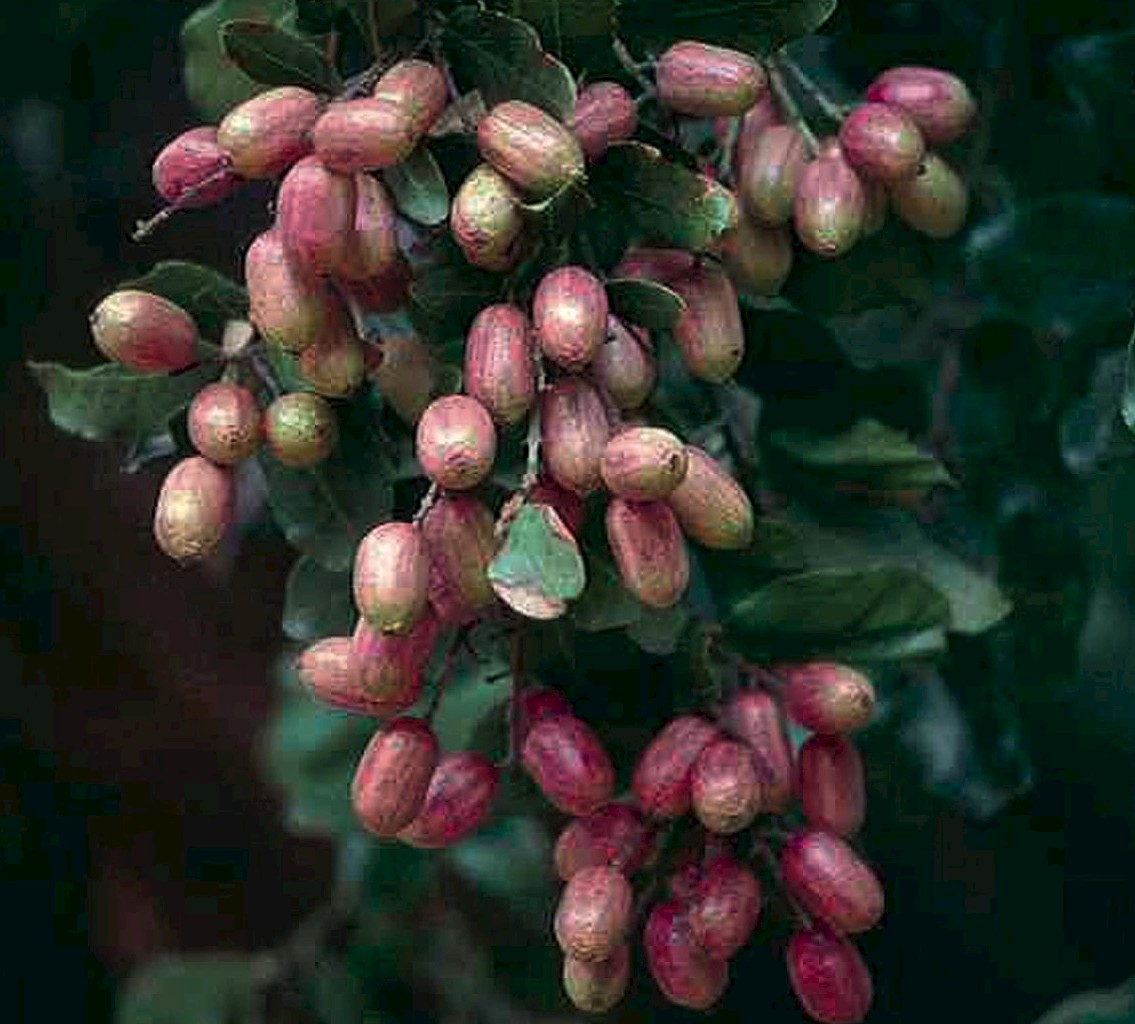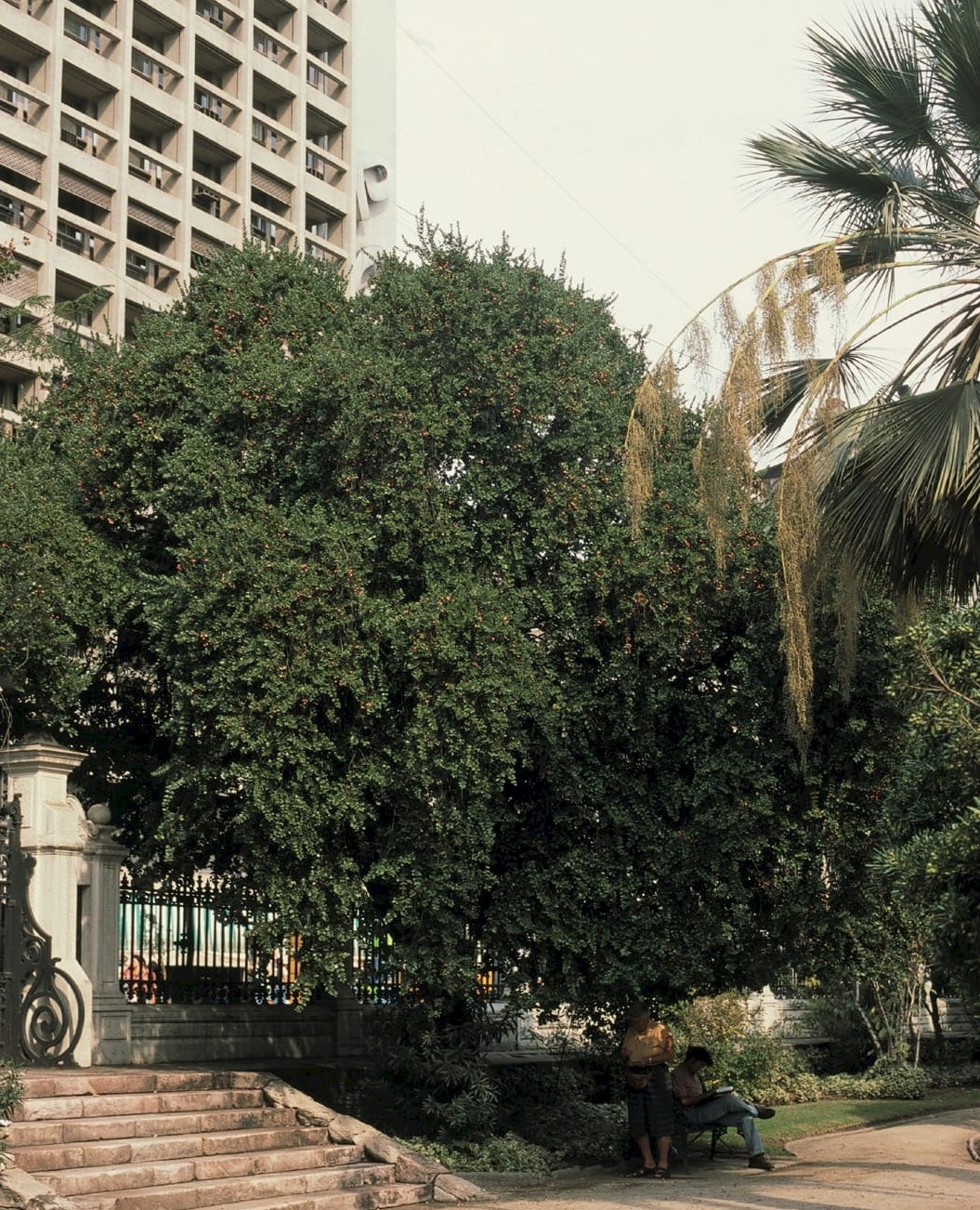Cryptocarya alba
Credits
Article from New Trees by John Grimshaw & Ross Bayton
Recommended citation
'Cryptocarya alba' from the website Trees and Shrubs Online (treesandshrubsonline.
Genus
Common Names
- Peumo
Other taxa in genus
Tree to 15 m, 1 m dbh. Branchlets pale brown, glabrous; often with a hint of waxy bloom. Leaves evergreen, opposite or almost so, 1–5(–8) × 1.5–4.5 cm, leathery and fragrant, ovate-elliptical or oblong, upper surface glabrous and dark green, lower surface glabrous, glaucous and with conspicuous, raised tertiary veins, five to eight secondary veins on each side of the midrib, margins entire and often slightly wavy, apex obtuse; petiole 0.3–0.5 cm long, smooth, glabrous. Inflorescences axillary, racemose, 2–6 cm long. Flowers yellowish green, 0.3–0.4 cm long; tepals fleshy, slightly pubescent, united at the base to form a short tube. Fruit a pinkish red waxy drupe, ovate with a thin skin, 1.5–1.8 × 0.7–1 cm. Flowering August to December, fruiting January to April (Chile). Rodríguez R. et al. 1983. Distribution CHILE: from Limarí to Cautín Province. Habitat Sclerophyllous forest to 1500 m asl. USDA Hardiness Zone 9. Conservation status Not evaluated. Illustration Rodríguez R. et al. 1983; NT288, NT289.
In its wild habitat Cryptocarya alba grows with a number of other evergreen trees in sclerophyllous forest, and like many of them, now has a toe-hold in cultivation. Material has been maintained under glass at Edinburgh of a collection made in the 1920s by Harold Comber, but more recent collections by Edinburgh expeditions to Chile have enabled plants to be grown outside. The only ones seen in the research for New Trees are growing at Tregrehan, from the Araucaria Expedition of 1998 (MAWAX 82), and these remain small, slow-growing specimens so far. Mature trees have a heavy canopy of rather dull dark green leaves (although they flush red), amongst which the small greenish flowers are inconspicuous. The pinkish fruits are rather more obvious (Chilebosque 1999–2008b). It is also grown at the University of California Botanical Garden at Berkeley. It would seem that a warm, sheltered site is required for successful cultivation in our area.


